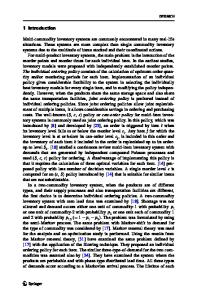Syntheses and Crystal Structures of Two Classes of Aluminum-Lanthanide-Sodium Heterotrimetallic 12-Metallacrown-4 Compou
- PDF / 1,792,184 Bytes
- 22 Pages / 595.276 x 790.866 pts Page_size
- 48 Downloads / 258 Views
(0123456789().,-volV)(0123456789(). ,- volV)
ORIGINAL PAPER
Syntheses and Crystal Structures of Two Classes of AluminumLanthanide-Sodium Heterotrimetallic 12-Metallacrown-4 Compounds: Individual Molecules and Dimers of Metallacrowns Jordan R. Travis1 • Alyssa M. Smihosky1 • Abigail C. Kauffman1 • Sven E. Ramstrom1 • Alex J. Lewis1 Sarah G. Nagy1 • Rachel E. Rheam1 • Matthias Zeller2 • Curtis M. Zaleski1
•
Received: 24 July 2020 / Accepted: 2 September 2020 Ó Springer Science+Business Media, LLC, part of Springer Nature 2020
Abstract Two series of aluminum-lanthanide-sodium 12-metallacrown-4 compounds have been synthesized and characterized by single-crystal X-ray analysis. For the individual LnNa(ben)4[12-MCAl(III)N(shi)-4] molecules, where LnIII = Eu (1), Gd (2), Tb (3), Dy (4), Ho (5), Er (6), Tm (7), Yb (8), Lu (9), and Y (10), ben- is benzoate, MC is metallacrown, and shi3- is salicylhydroximate, two independent molecules are present in each unit cell. The aluminum(III) ions and shi3- ligands comprise the MC framework, while the LnIII and Na? ions bind opposite of each other across the central MC cavity. The benzoate anions serve to tether the LnIII ion to the MC framework. When benzoate is replaced with the dicarboxylate anion isophthalate (iph2-), two [12-MCAl(III)N(shi)-4] units are connected to form a dimer of MCs: {LnNa[12-MCAl(III)N(shi)4]}2(iph)4, where LnIII = Eu (11), Gd (12), Tb (13), Dy (14), Ho (15), Ho (16), Er (17), Yb (18), and Lu (19). As in 1–10, the aluminum(III) ions and shi3- ligands produce the MC frameworks, and one LnIII ion binds to each central MC cavity. However, there are two binding modes for the sodium ions. For 12–15 and 18, the sodium ions bind to the central MC cavity opposite of the LnIII ions as in 1–10. For 11, 16, 17, and 19, the sodium ions bind to the side of the MC framework by bonding to the phenolate and carboxylate oxygen atoms of two shi3- ligands and to the carboxylate oxygen atom of an iph2- ligand. In these structures, the MC cavity is vacant opposite of the LnIII ions. The substitution of isophthalate for benzoate does not significantly alter the [12-MCAl(III)N(shi)-4] framework as the size of the central MC cavity is not significantly different between analogous lanthanide individual and dimer MCs. However, the identity of the central LnIII ion does determine how close the LnIII ion can approach the mean plane of the oxime oxygen atoms (OoxMP) of the MC cavity. As the ion radius of the central LnIII ion decreases, the LnIII ion is able to more closely approach the OoxMP. For the ˚ ) and this value steadily decreases to individual MCs 1–10, the EuIII of 1 is the farthest away from the OoxMP (1.55 A III III ˚ ˚ from the OoxMP and 1.44 A for the Lu ion of 9. This same trend is true for the dimer MCs as the Eu ion of 11 is 1.45 A III ˚ the Lu ion of 19 is 1.36 A from the OoxMP. Though the location of the sodium ions in the dimer MCs does influence the LnIII-OoxMP distance as the absence of the sodium ion in the MC cavity allows the LnIII ion to approach the MC ca
Data Loading...











